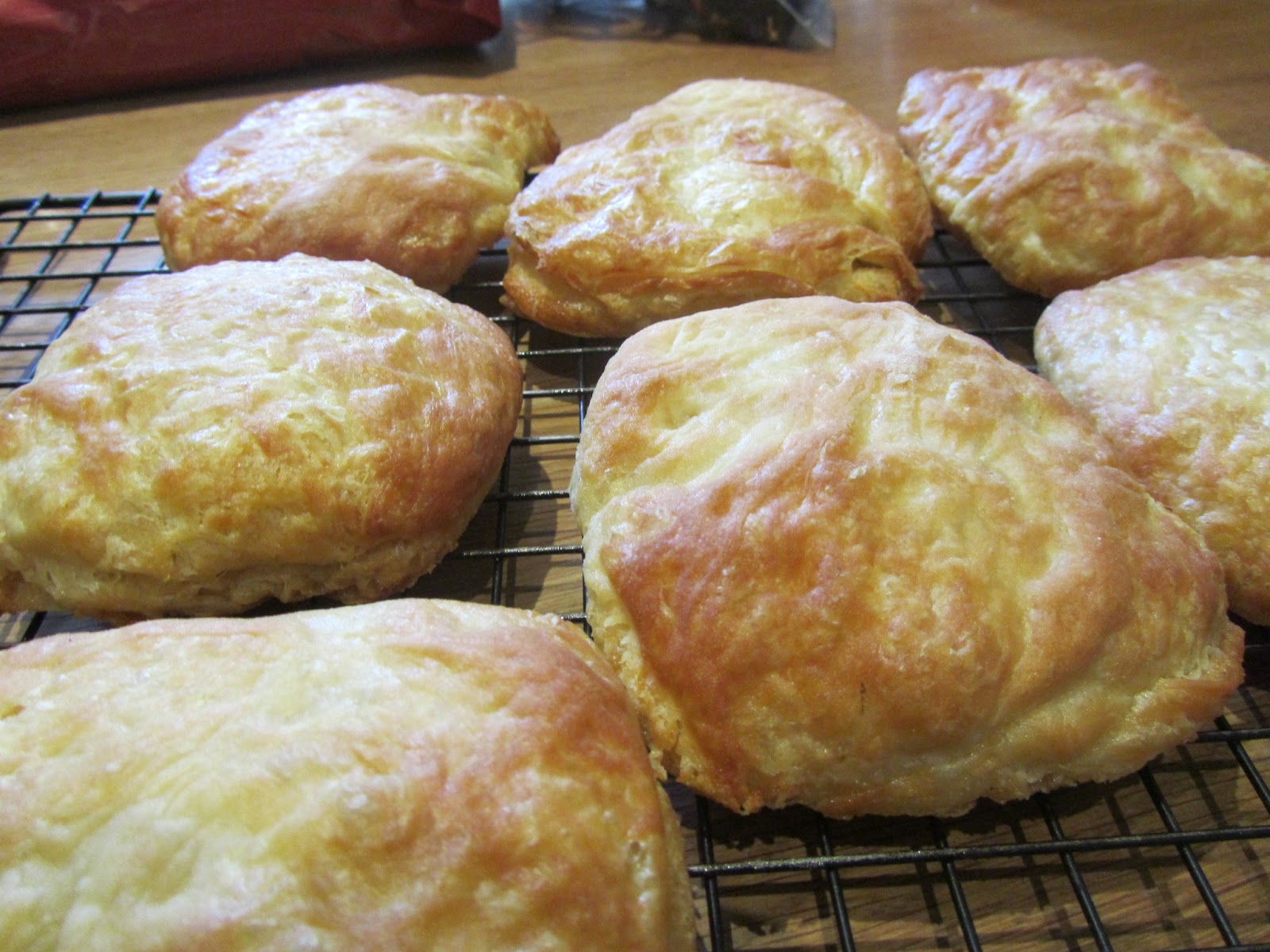You need to start by making a basic dough (flour, water, yeast, sugar, salt), in my case in the bread machine, though you could equally do it by hand or in a mixer. I used the pizza setting for this, which takes 45 minutes, rather than the regular dough setting, as there was going to be plenty more opportunity for the dough to have a good rest. Now, as this blog should really reflect the reality of my culinary experience, I'll tell you that when I opened the bread machine, I was met by a gloopy batter rather than a nice silky dough. The recipe instructed me to roll it out, so I figured that this could not be the way things were meant to be. So, I managed to scoop it out with a scraper and added quite a lot more flour and give it a quick knead before continuing to the next step. As a result, I've adjusted the original quantities, which I gleaned from a number of sources, including Elizabeth David's English Bread and Yeast Cookery, and adapted to be enough for about 8 rowies. I'll add at this point that I am very far from being a mathematical genius, so it may be that my tinkering is what led to the gloop in the bread machine. Anyway, what I've used in the recipe below should be about right, and if it isn't, then add a bit more flour or water until you have a soft, but not sticky dough. The method is basically the same as making flaky pastry or croissants. If you have a warm kitchen, it's a good idea to refrigerate the dough while it's resting.
Before I go any further, I would also like to offer you the following piece of advice. On NO account should you do what I did and use a baking tray without a lip all round for baking these.
 |
| Don't do this (flames not shown) |
The rowies will produce melted fat, and without a lip, the fat will run off the tray and all over your oven, and if you are unlucky, you will come into the kitchen to find billows of acrid smoke emerging from your oven and actual flames in your oven. This is not a good thing. I hope you will agree that despite the fact that my rowies had to be hastily whipped from the oven and left on the side while I extinguished flames, cleaned up the mess and ran about opening windows and shouting obscenities at the top of my voice before reheating the oven and slinging them back in, they have turned out nae bad. They do however, have a faint hint of burning rubber in the flavour which is not entirely desireable.
Rowies (makes 8)
for the basic dough:
1 tsp quick yeast
300g strong white flour
1 1/2 tsp caster sugar
1 tsp salt
225ml water
then:
140g butter
50g lard (both at room temperature)
1. Make a dough with the basic dough ingredients. If using a bread machine, follow manufacturer's instructions for order of ingredients. If making by hand, mix the ingredients together, knead until smooth and silky, cover and leave the dough for 45 mins to rest.
2. Chop the fats into small cubes, mix together and divide into 3 portions.
3. When the dough is ready, gently roll it out into a rectangle about 1.5 cm thick. Try not to knock too much air out of it - be gentle. Cover and leave it to rest for 30 mins.
4. Spread 1/3 of the fat onto the top 2/3 of the dough, then fold the other 1/3 over the middle 1/3 and then fold the top 1/3 down on the top to make an envelope. That sounds more complicated than it is. 'Fold it like a letter' is what I'm trying to say, but get the bit with no fat on into the middle.
 |
| (or show them a photo. That will help) |
5. Gently, trying not to tear the dough, work the dough, prodding or rolling it gently it rather than kneading it, to slowly work it out into a long rectangle again. Cover and leave for 1 hour.
6. Repeat steps 4 and 5 twice until you have used up all the fat.
7. Cut the dough into 8 pieces. Flatten them out again by prodding gently with your fingers until you have flattish round or rectangular patties, and place them on a heavily floured baking tray - SEE TIP ABOVE! You may wish to use rice flour, or fine polenta, but wheat flour is fine if that's all you have. Cover and leave for 45mins.
8. Meanwhile, heat the oven to 220C. Bake for about 15 mins until golden brown.
Eat with more butter if you can bear it, preferably salted. Serve with a strong cup of tea, especially if you have almost burned the house down whilst making them.



No comments:
Post a Comment